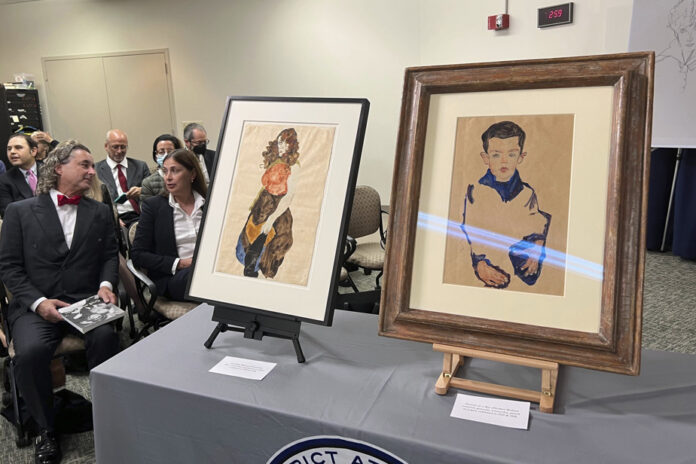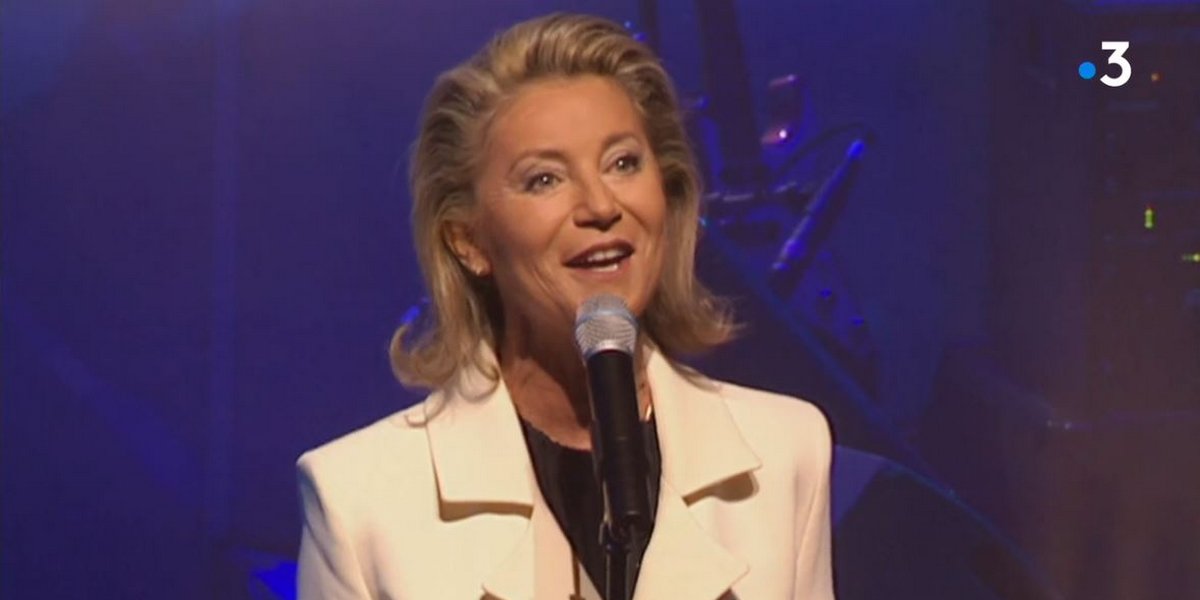(New York) More than 80 years after the death in deportation of Jewish collector Fritz Grünbaum, and under pressure from American justice, his heirs obtained on Wednesday the restitution of seven works of art stolen by the Nazis from prestigious collections, including that of MoMA in New York.
The heirs of this Austrian cabaret artist and great art collector, who died in Dachau in 1941, have been fighting for several decades in court to regain possession of his works, mainly drawings by Egon Schiele (1890-1918), figure of Austrian expressionism.
“Thank you for putting yourself on the right side of history. What you did is historic,” greeted one of them, American judge Timothy Reif, while addressing, during an official ceremony in New York, Manhattan prosecutor Alvin Bragg, whose prosecution is equipped with a special cell to combat the trafficking of works of art.
Presented during the ceremony, Schiele’s drawings, watercolors or pencil on paper, such as I love Antithesis, Standing Woman, or Portrait of a Boy, were in prestigious collections at the Museum of Modern Art in New York ( MoMA), at the Morgan Library in New York, at the Santa Barbara Museum of Art (California), in the Ronald Lauder collection and within the Vally Sabarsky trust, named after the art dealer Serge Sabarsky, who died in 1996.
President of the World Jewish Congress, heir to the Estée Lauder cosmetics group and founder with Serge Sabarsky of the Neue Galerie in New York, Ronald Lauder was himself a defender of the restitution of works stolen by the Nazis.
American justice has taken up one of the key arguments of Fritz Grünbaum’s heirs.
Arrested in Austria in 1938 then deported to the Dachau camp, the artist was forced to sign a power of attorney for the benefit of his wife, Elisabeth. She herself was then forced to hand over the entire collection to the Nazi authorities, before being deported and killed at the Maly Trostinec concentration camp, near Minsk, in what is now Belarus.
“Fritz Grünbaum and his wife, Elisabeth, never had the opportunity to reunite with their treasured art before their untimely deaths, but their legacy will live on,” said Ivan J. Arvelo, Special Agent in Charge of Homeland Security (HSI) in New York.
In a previous case, a New York judge had already ordered in 2018 the return of two drawings by Schiele to the Grünbaum heirs, writing in his judgment that “a signature at gunpoint” had no value.
Since then, the collector’s descendants have restarted their procedures. Last week, three other drawings by Egon Schiele for which they claim ownership were seized by the courts, notably at the Art Institute of Chicago.
American justice has retraced the tortuous journey of the works. The Grünbaum collection had been inventoried by art historian and Nazi party member Franz Kieslinger, and all the works by Schiele, considered “degenerate” art by the regime, had been sold, the prosecution explained. from Manhattan.
In 1956, the seven drawings reappeared in Bern, Switzerland, in the hands of collector Eberhard Kornfeld, “who had established a special business relationship” with the son of the art dealer and Adolf Hitler’s “personal art advisor”, Hildebrand Gurlitt, adds American justice.
The same year, the drawings landed in New York, purchased by a New York gallery owner, Otto Kallir.
The subject of restitution of works of art stolen by the Nazis remains relevant in other countries.
In France, Parliament adopted a framework law in July to facilitate the restitution by public collections of cultural property stolen from Jews.
According to figures published at an international conference in Terezin in the Czech Republic in 2009, around 100,000 works out of 650,000 stolen had still not been returned at the time.















